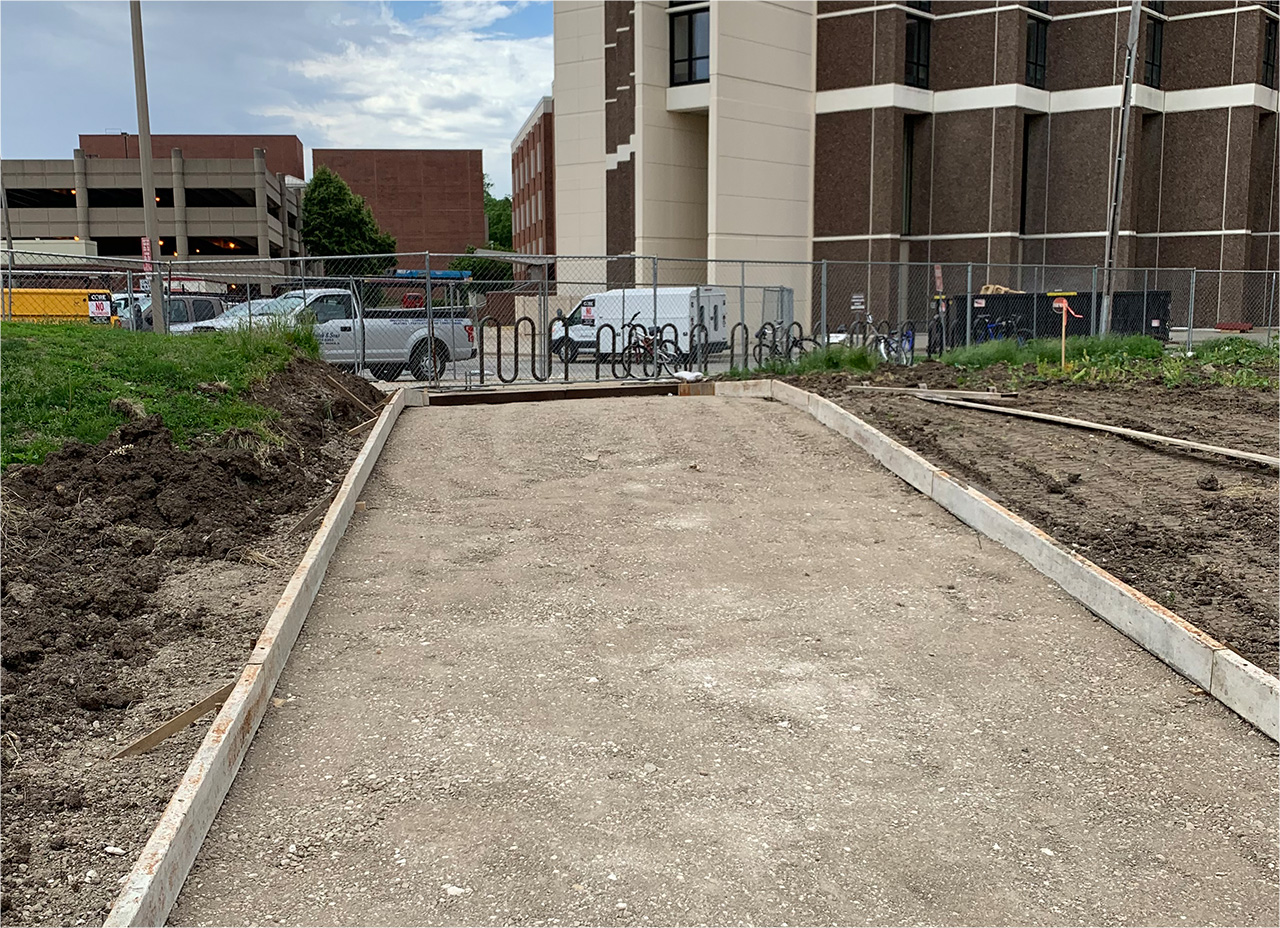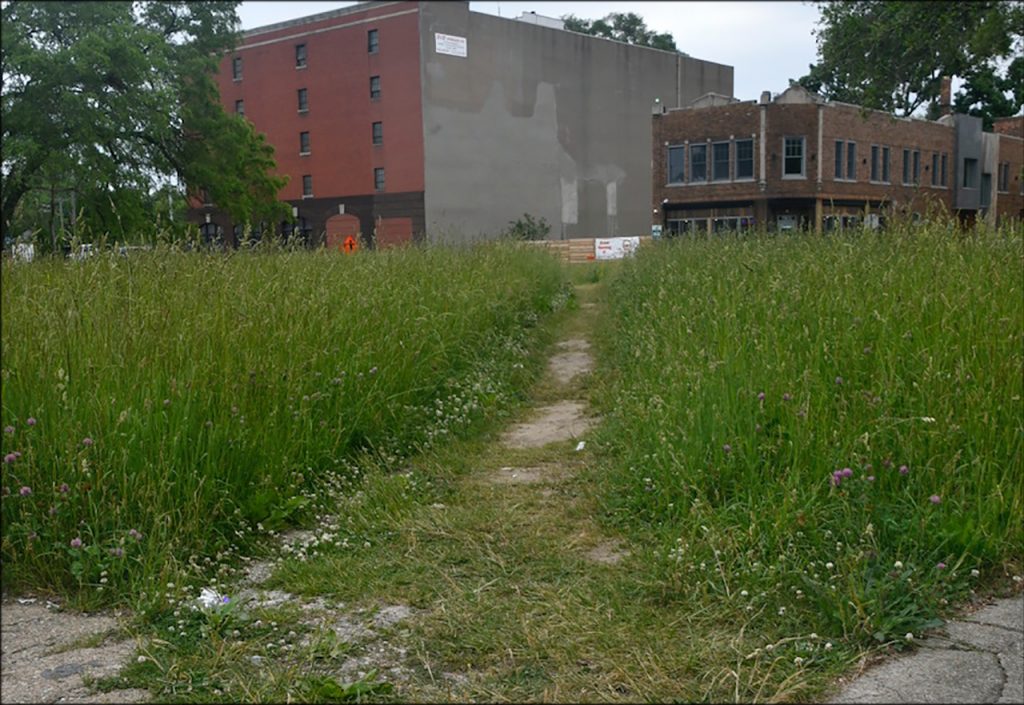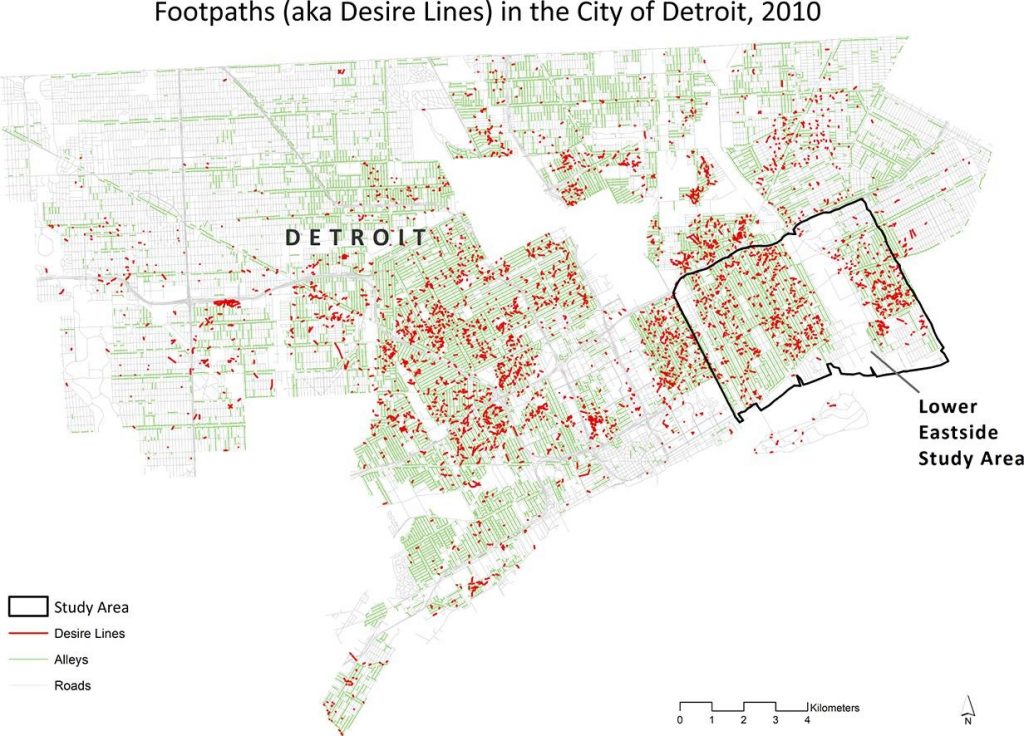Think of them as the path more taken. Created by walkers venturing off the paved road, footpaths can be seen as residents making their will known.
“The most obvious thing about footpaths is that they ease mobility and provide shortcuts for people walking through a neighborhood,” said Illinois State University’s Assistant Professor of Geography Alec Foster, who studies informal footpaths—also known as “desire lines”—that are created by pedestrians.
Foster, who is author of the recently published article “Detroit’s lines of desire: Footpaths and vacant land in the Motor City,” noted footpaths are more than foot traffic—they can reflect the needs of an area, and inform city planners. “When architects, designers, and planners are laying out the plans for a new quad for a campus or park, they should avoid putting down any pavement at first, and let the people decide where to go,” he said. “Eventually those paths will be created with a more human-centered design.”
Over the years, students at Illinois State have voted for new paved paths with their feet. Several walkways on the Quad were once footpaths created by students taking shortcuts. “It’s a natural progression for students to take the shortest route to classes,” said Interim Associate Vice President for Facilities Management, Planning, and Operations Chuck Scott. “If you take an aerial look at the Quad, you can see the results of student paths being made into concrete sidewalks or hard-surface walkways over the decades.”
Footpaths that have evolved into paved walkways at Illinois State include ones east of Cook Hall, south and west of Moulton Hall, and the brick pathway between McCormick and the State Farm Hall of Business. Many times, University Grounds workers attempt to repair damaged areas from footpaths with grass seed or divert the way with plants. “But there are times the foot traffic prevails,” said Scott. He remembered standing next to a pathway alongside President Lloyd Watkins, who served as University president from 1977-1988. “President Watkins looked at me and said, ‘You’re going to pour concrete right here,’” said Scott. “And we did.”
The latest paved footpath at Illinois State is part of the construction around Watterson Towers. A small hill provided a shortcut between the sidewalk on Fell Avenue and the circle drive by Watterson Towers. Instead of sticking to the sidewalk that rounded the curve, for years students walked over the hill, wearing a path into the grass. University planners decided to pave the path.
The creation of desire lines can reflect more than a wish to shave time off of a journey. During his study on the loss of desire lines in the lower eastside neighborhood of Detroit, Foster noted footpaths can reflect social issues. “Places like Detroit—cities in the Rust Belt— have large areas where people are living in poverty,” said Foster, who added that in lower eastside Detroit, more than a quarter of the population doesn’t have access to vehicles. “The public infrastructure is crumbling—so sidewalks are disintegrating, and public transportation is not great. There are accessibility issues for people to reach employment, access groceries, or obtain basic social services.”
Through interviews and imagery, Foster discovered that between 2010 and 2016, more than 70 percent of footpaths in the lower eastside of Detroit were abandoned as residents surrendered the paths to crumbling roads and overgrowth. “There are lots so overgrown by weeds that they aren’t even passable by people on foot. It can become a safety issue if the grass becomes too high,” he said.
As opposed to seeing footpaths as a blight on the grass, Foster hopes planners will consider the paths as a reaction to designs not necessarily meeting the needs or goals of residents. “So many times, revitalization of an area is led by from people from outside the area. They are not talking to residents,” said Foster. “Planners need to consider what’s actually happening in an urban socioecological system—the neighborhoods—to make a lasting change.”






This is not rocket science. It is the same as was done over 50 years ago when IS(N)U was not much more than the quad. Everything old is new again.